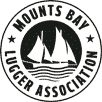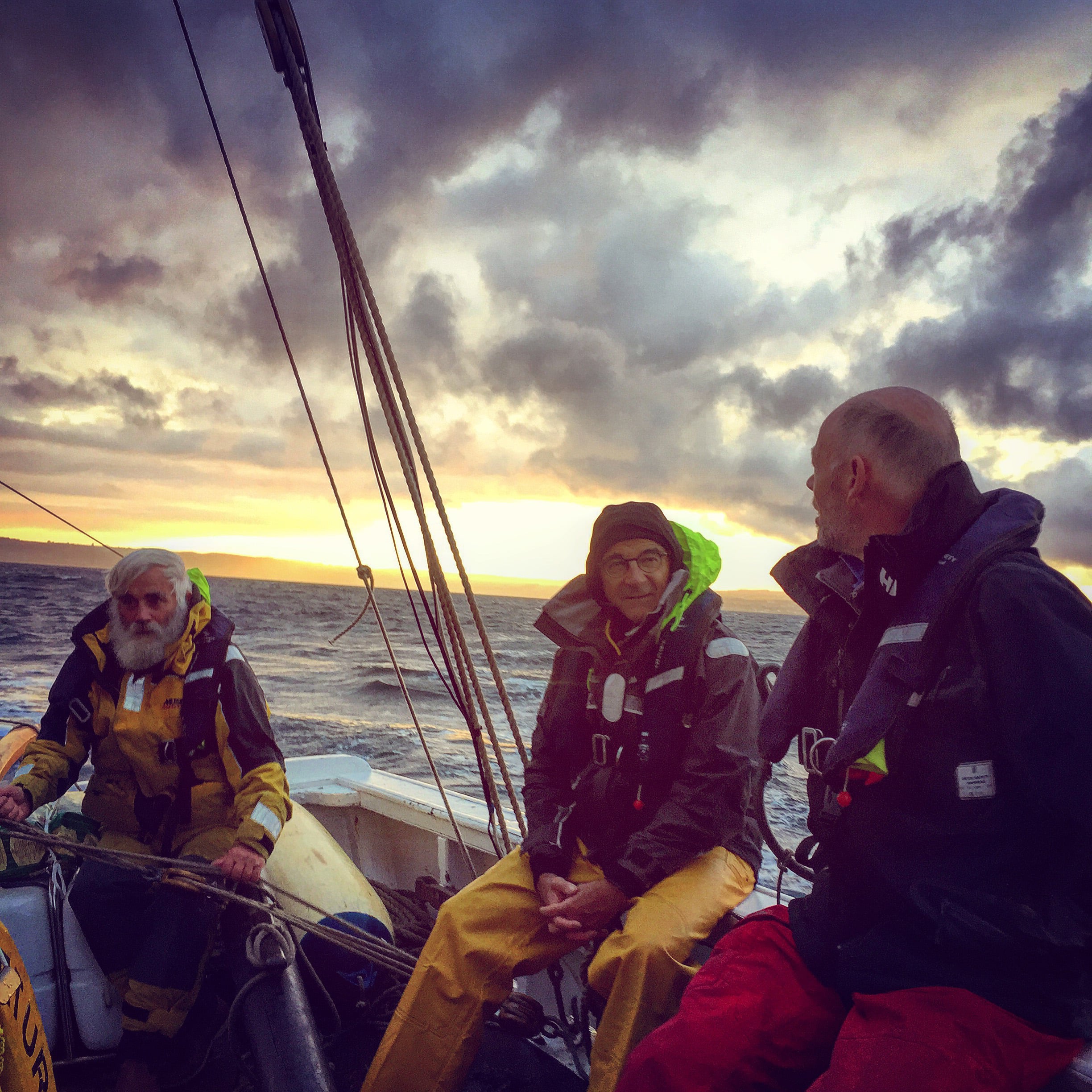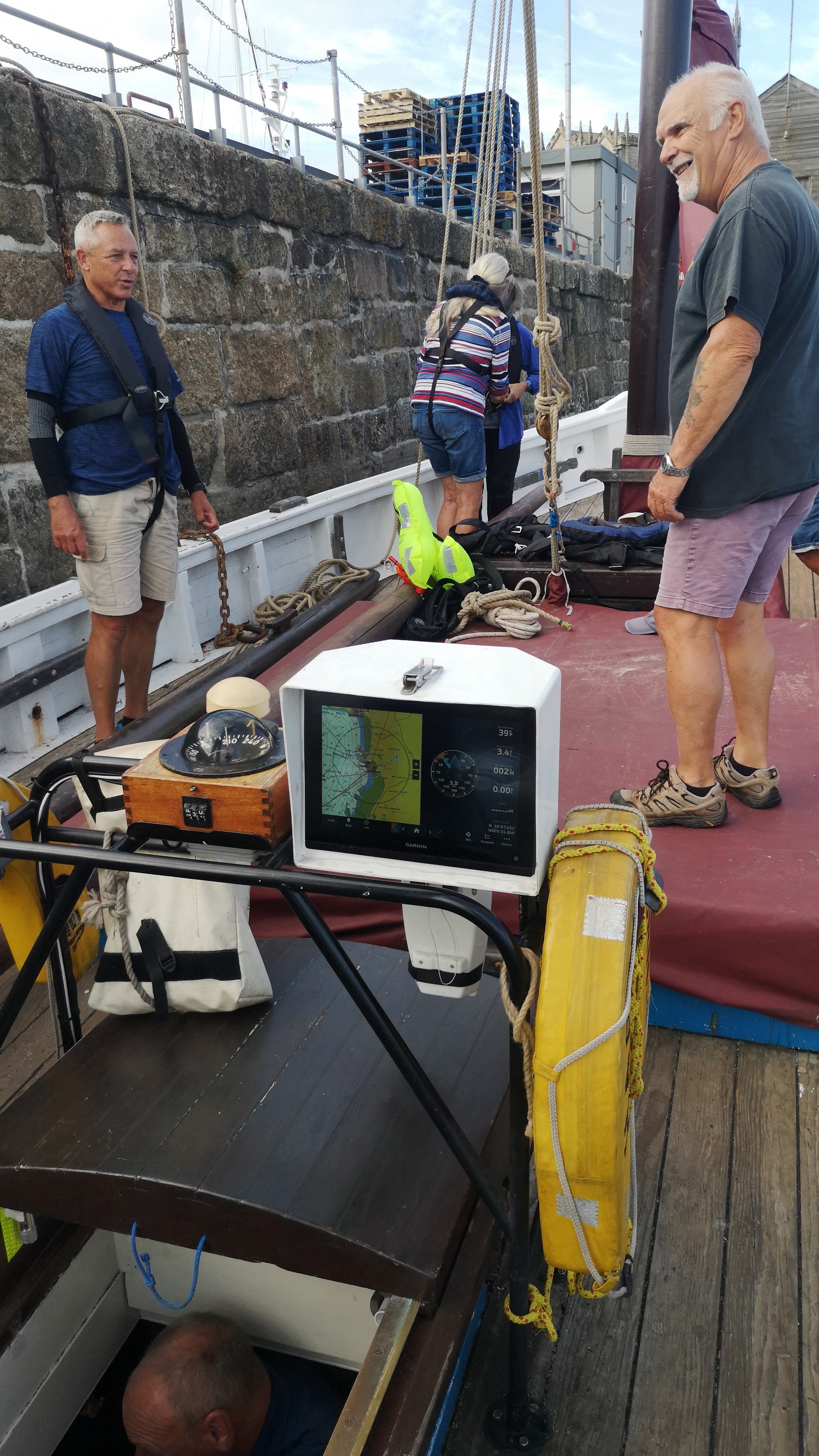How to sail a lugger
Some pictures from our sail training day in August 2022. Thanks very much to Nick Moore for providing the tuition.
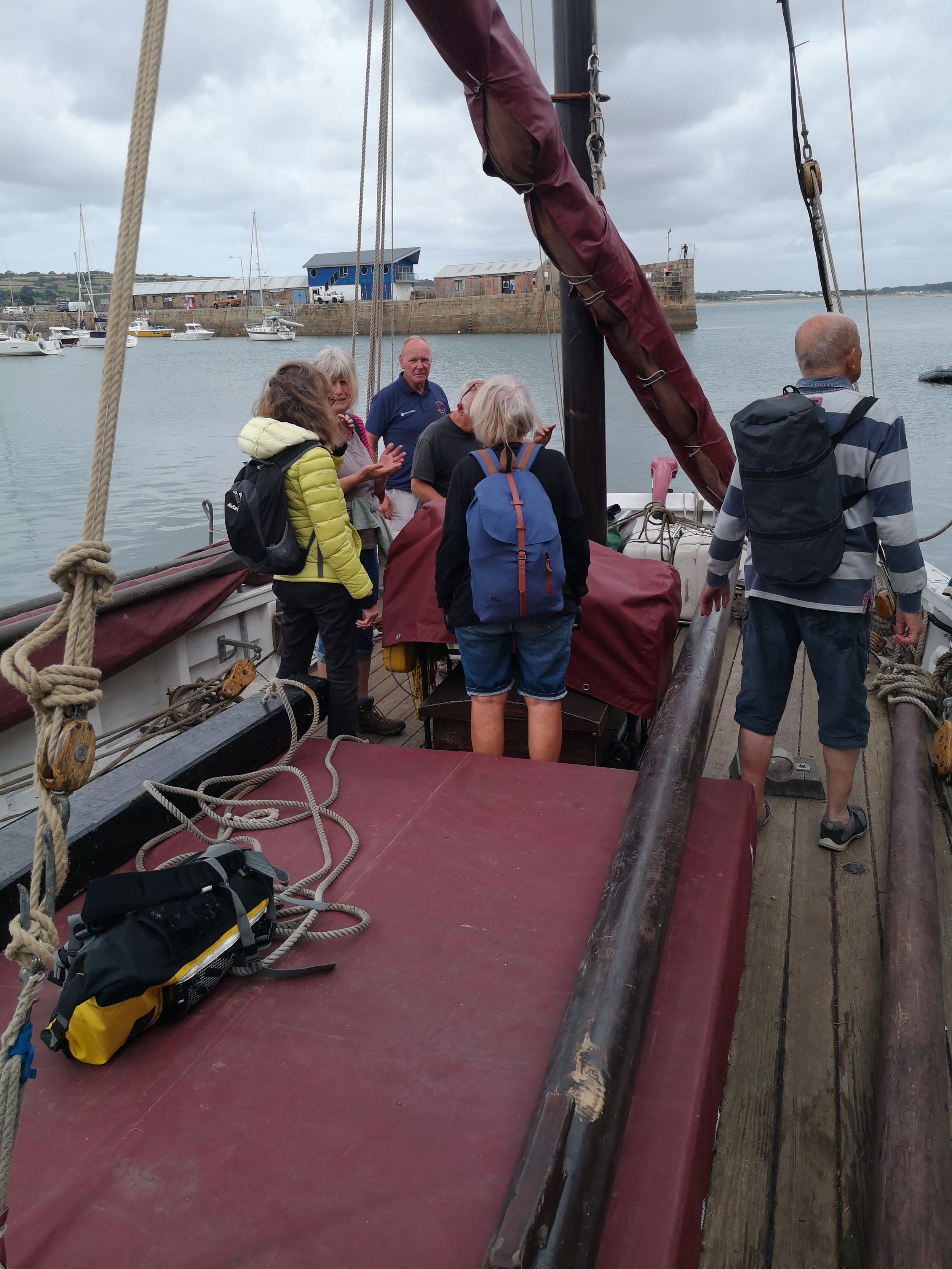
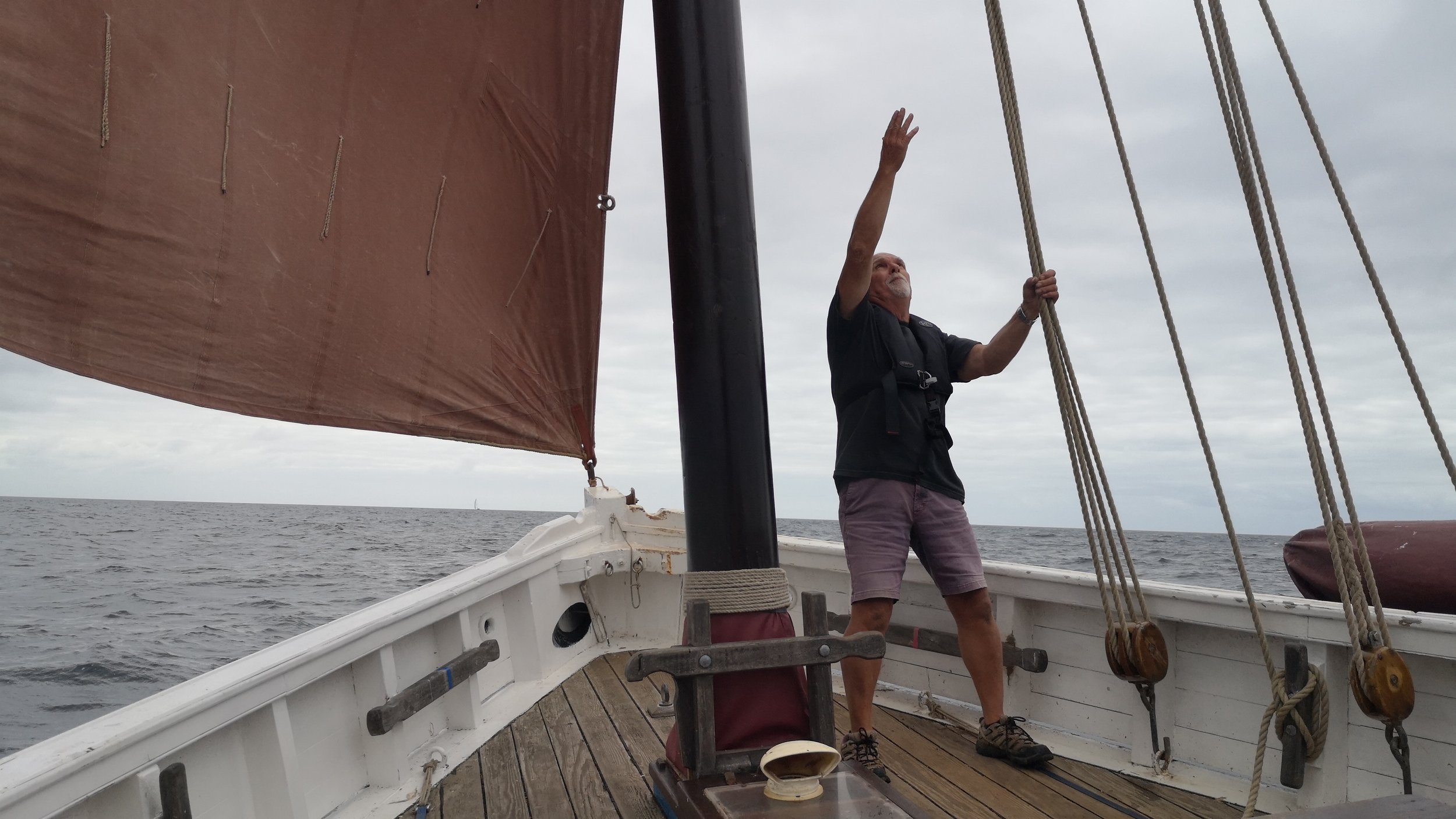
Peculiarities of the Lugger- “Happy Return” (referred to as HR below).
Happy Return was a working fishing boat when she began life in 1905, and this explains a few of her apparent idiosyncrasies.
She is a type of craft known as a dipping lugger. Unlike sailing dinghies or even ketch-rigged boats like the famous Brixham trawler, HR has no boom, or lower spar, on the foot of the mainsail or the mizzen sail. She also has very little standing rigging. This is because while fishing, the decks could easily be made free of spars, sails, rigging, and the fore mast could be lowered, reducing the centre of gravity when laying-to the long lines or nets. Cost at the time also played its part, in that the simpler the rigging the less expense in costly cordage.
The lug sail is an asymmetrical quadrilateral sail (almost a rectangle) that fastens to a spar along its top edge. The spar is held on to the mast by way of a traveller(iron ring) and a rope strop which is raised and lowered using the halyard (rope, block and tackle) which is attached to a ring bolt on the deck. It is always set on the windward side of the mast, and can be moved from one side to the other. The bottom of the mainsail has two rings: the one to the fore is called the tack, and is secured to a hook at the bow. The sail ring to the aft is called the clew, to which a sheet(rope) is attached by a hooked-on block and tackle. This sheet is used to set the sail so it has the best aerodynamic shape to the wind to give the boat the best speed through the water.
HR has only one stay on each mast. The stay supporting the mainmast is called the burton, the one on the aft mast the mizzen stay. On the fore mast the burton is always set to the windward side and the forelug (mainsail) is always set to leeward (downwind). Thus, when HR changes direction in relation to the wind, everything must be shifted from one side of the boat to the other. When sailing into the wind, a sailing boat has to tack, changing course aslant the wind bow first, or gybe, when the stern is turned towards the wind. On HR, the gybe is much preferred as the helmsman may hold the boat stern to wind, allowing a more relaxed time in turning. Whichever process is used, the forelug(mainsail) has to be changed from one side to the other.
The big spar is lowered using the halyard until what was the higher end of the spar - the aft end- can be caught by the appointed (strong) person and carried just forward of the mast where it is rested momentarily on the deck. To aid this person we have a long light rope attached to the aft end of the
spar, called the downhaul, which is used by another crew member to control the spar end as it comes down. At the same time the clew is unhooked from its sheet and taken forward of the mast, as is the downhaul rope. Once the clew and spar are forward of the mast then the halyard and burton are unhooked from their ring bolts and reattached to the bolts on the opposite side of the boat. As soon as this is done, the person with the clew moves quickly aft to hook it on to the waiting sheet, usually held ready by another crew member. During the operation the person on the halyard will confirm that the person holding the spar is ready and then haul the halyard to raise the spar, and the sail is deployed on the now-leeward side of the craft.
You will be glad by now to hear that changing tack on the mizzen sail is much simpler. The mizzen is always mounted on the port side of its mast, with the tack (see above) attached to a hook at the bottom of the mizzen mast. This is known as a standing lug and is not moved from side to side when changing direction. At the stern of the boat is an outrigger(long pole) which is used to set the sail by way of a sheet which is run through a pulley at its end and then secured on a cleat on the outrigger's inboard end.
So, to recap- we have a dipping lug at the front of the lugger which needs a minimum of four people to change it from one side to other when tacking or gybing, and a standing lug at the back of the boat which can be adjusted by one crew member.
Sailing Skills
We encourage anyone interested in sailing to join MBLA whatever your skill level. You don't need any experience, however if you are ambitious we have developed a programme to help you improve and ultimately become a qualified Skipper.
Beginner
Never been aboard? Don't worry, day sails and evening sails in Mount's Bay are a great way to start. Our fully qualified skippers and other friendly experienced crew members will ensure that you are safe, and if you want, will show you how to muck in to get you familiar with the lugger. You may be happy with this level of involvement and we will always be pleased to have you on board to enjoy you trips on Happy Return.
Intermediate
If you have been on board a few times you will have helped with some aspects of boat handling and may want to progress further. We will work with you at your own pace to gain more experience in all the different techniques required to sail the boat and to build an understanding of how they all fit together in managing the boat. You will probably want to join our longer 2–5 day trips to increase your time on the boat and experience of other skills such as anchoring and mooring in different conditions.
You may then progress to the level of 'Mate', when you will work with the Skipper to manage the trip and take responsibility for certain aspects of the boat's management.
Advanced
For members with ambition to progress further, we can support you in developing a full range of skills with the support of our qualified skippers, including navigation, electronic instruments, engine management etc., and can provide opportunities for advanced sailing experience such as longer sails and night passages, which can meet the requirements to enter the Coastal Skipper and Yachtmaster practical examinations and become a skipper of Happy Return in your own right.
Mount's Bay Lugger Association Code of Conduct
The Mounts Bay Lugger Association (MBLA) committee guidance on conduct and grievance procedure for Happy Return sailing in the bay, on trips away, and at events.
When on board Happy Return, you’re part of the crew, and although we want all members to enjoy the sail, and get what they want from it, be aware that as crew you may be asked by your skipper or mate to help (as far as you can) with the sailing and safe operation of the vessel.
Whilst on-board your safety is our primary concern, and as such we start with a safety briefing if there are new members onboard, or in the event that a crew member is in need of refreshing. Please say if you don't understand something and kindly confirm that you do understand the briefing.
In all sailing matters, the skipper has the final word and may not be countermanded. Skippers and mates (the second in command) should conduct themselves in a relaxed and friendly manner, but it may be necessary to be loud and directional at times. Don't be offended by a shout, it’s not personal, but might be necessary for safety sometimes.
We are usually a mixed gender group, so it’s not acceptable to wander around in a complete state of undress, and when below please observe personal space as far as is practical, and modesty when changing. Please close the heads door when using it, putting the light on first. The switch is on the ceiling light, please ask if you can't find it. Gentlemen, please don't relieve yourselves over the side in company of others. Ladies, if you do so you may fall in! There are buckets in the stern if in extremis.
When you are ashore at association events, or when cruising away from our home port, you are a representative of the Happy Return and the MBLA. Please do not get extremely drunk, disrespectful, inappropriately dressed or undressed in public. Abide by local customs and rules.
Personal property is your responsibility, and MBLA will not accept claims for loss or damage. It’s not wise to bring onboard jewellery, expensive clothing, watches or cameras. They may be damaged, made wet, or lost over the side.
In the event of a complaint or disagreement, you should in the first instance direct your grievance to the skipper, or mate. If the outcome of this meeting does not resolve the matter, then the MBLA Committee is always available to air your concerns or redress. The skipper can inform you how to access the committee in this event.
Good sailing!
